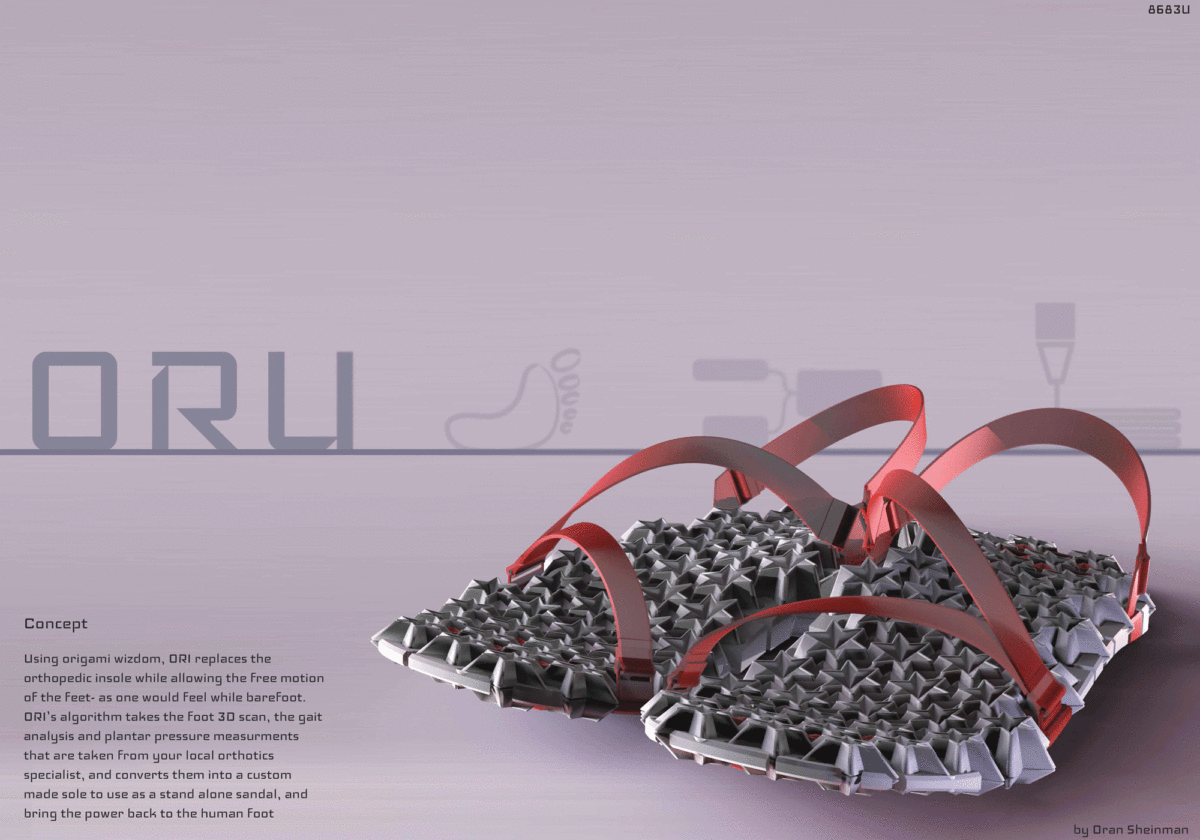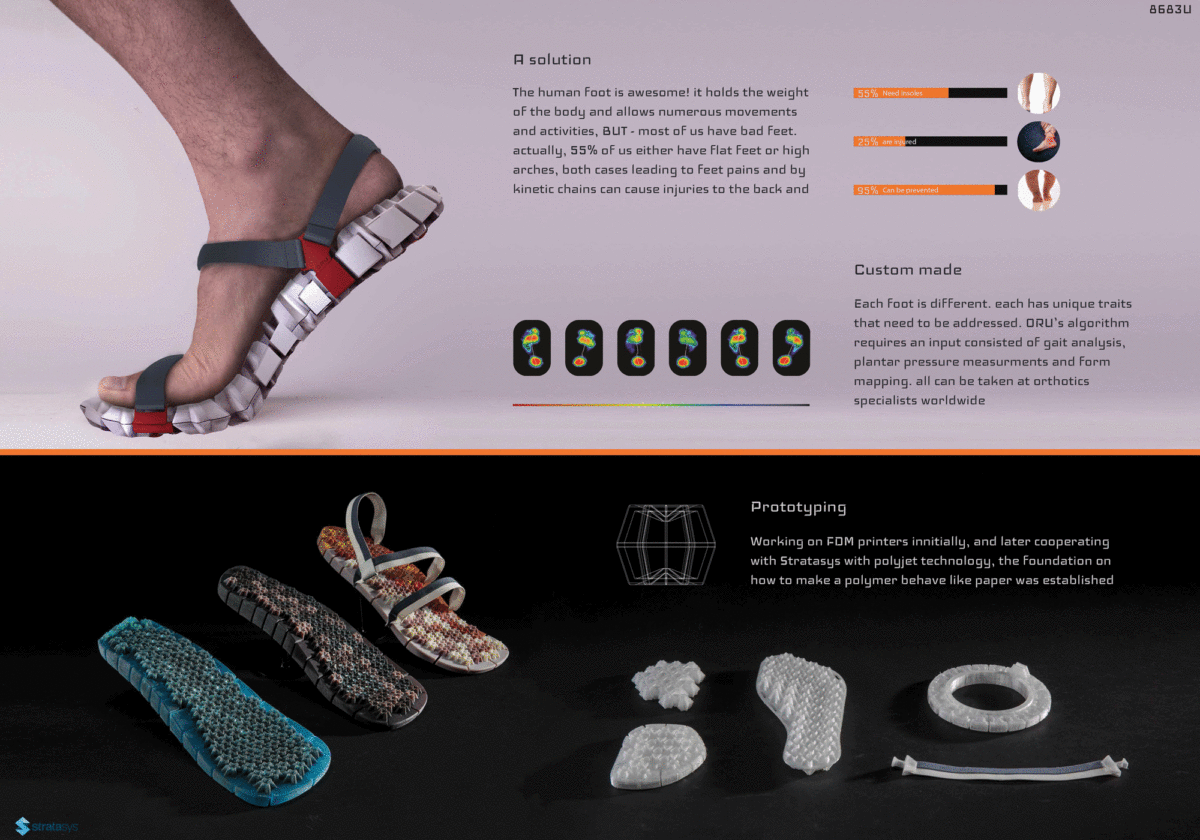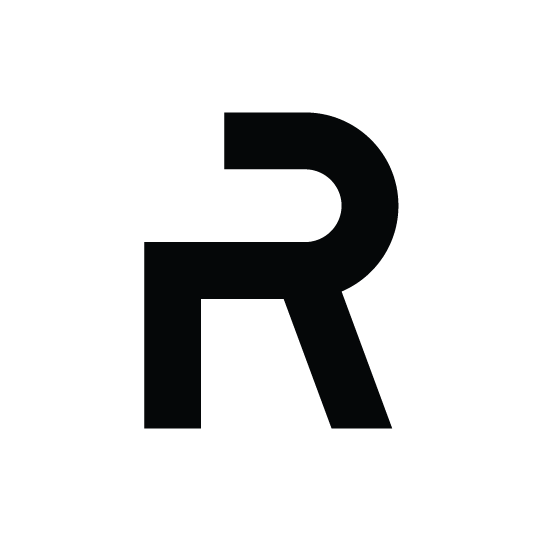RESHAPE18 | sensing materialities
Project design category
Oru
Designer: Oran Sheinman
Movement and structure can be defined as two opposing elements. The more a surface becomes structured, it loses its ability to move freely, and the more it becomes flexible, its ability to withstand weight is compromised. in the world of shoe fabrication, this issue is addressed with the compositing of layers of flexible materials, to create soles with programmed behavior. In this project I suggest a new approach, putting the materials aside, and founding a new geometrical database to create metamaterials with programmed movement.
In a world that 3d printing becomes a household name, new opportunities are created. Our ability to create complex, agile surfaces, ones that can be altered without any machine adjustments, ones that can be programmed to specific and complicated functions is growing rapidly. In parallel, the way we design is evolving at the same pace. Parametric design tools are now accessible to all, and the designer’s ability to use the two, coding and printing, has created a new outlet for design. Having said that, our tools to implement these new mechanical opportunities are still limited.
ORU started as a research in folding mechanisms, using traditional and modern approaches to Origami, Kirigami, and other folding technics.
Initially, the train of thought was that origami is a natural partner to additive manufacturing – as it produces strong structures and versatile mechanisms with thinly layered surfaces. Furthermore, the most economical way to print is, oddly enough, flat. As this endeavour progressed, a series of mechanical aspects were mapped and disassembled to be used as a database for product and mechanical design. with the halfway mark of the project becoming closer, a product implication was decided – The human foot.
The shoe is the most complicated garment that we wear. Its function is to hold the weight of the body (unlike others, that are supported by the body itself), and requires utmost intricacy to properly support each foot with her unique complexity.
In this field, a conflicting notion was distinct; 55% of the western world population has feet issues, and the solution to most is the use of orthotics. As insoles serve their purpose in creating proper alignment and personalized structure for each foot, their form, as a fixed surface, inhibits the foot free motion and with time create an atrophying effect – once one starts wearing orthotics, he physically can’t stop.

Working with top orthotics specialists, the manifest for ORU’s algorithm was established. The mechanism that was developed had two unique abilities; At the one hand, it was built like pixels on a screen that could be adjusted parametrically to fit each spot of the foot perfectly, and on the other, as the pixels was connected via one line – they had a global response, mimicking the foot natural roll effect, that is being produced while
walking and running barefoot – thus Replacing the insole, and rehabilitating the feet simultaneously.
Using Grasshopper as a parametric outlet, the mechanism was coded and developed using FDM printing as a prototyping agent to fine-tune the sodalities that change when converting from paper to polymer. As the algorithm was completed, a cooperation with Stratasys was made to further explore these new possibilities, with the making of multiple material prototypes that examine different aspects of the sole.
As the project got to its last phase, the sole morphed into a 3d printed sandal, that could be printed everywhere, locally. It is estimated that the world will industrialize additive manufacturing by the year of 2020, at that time, it will be affordable to make these sandals for the masses.
Looking ahead, ORU is a first step in a long path, an unmapped route to new designs and solutions to help our rapidly changing world. With Reshape assistance, the build of the database will continue, and hopefully a new language of folded printed mechanics would be formed.


